Remember when the ultimate prize on family road trips wasn’t shotgun, but that special kingdom at the very back of the station wagon? Those rear-facing seats or open cargo areas that we lovingly called the “way back” were the coveted territory of kids everywhere from the 1950s through the early 1990s. Before minivans and SUVs conquered suburbia, the family station wagon—with its wood-paneled sides and that magical third row—reigned supreme as the chariot of childhood adventures and summer vacations.
1. The 1957-1991 Mercury Colony Park
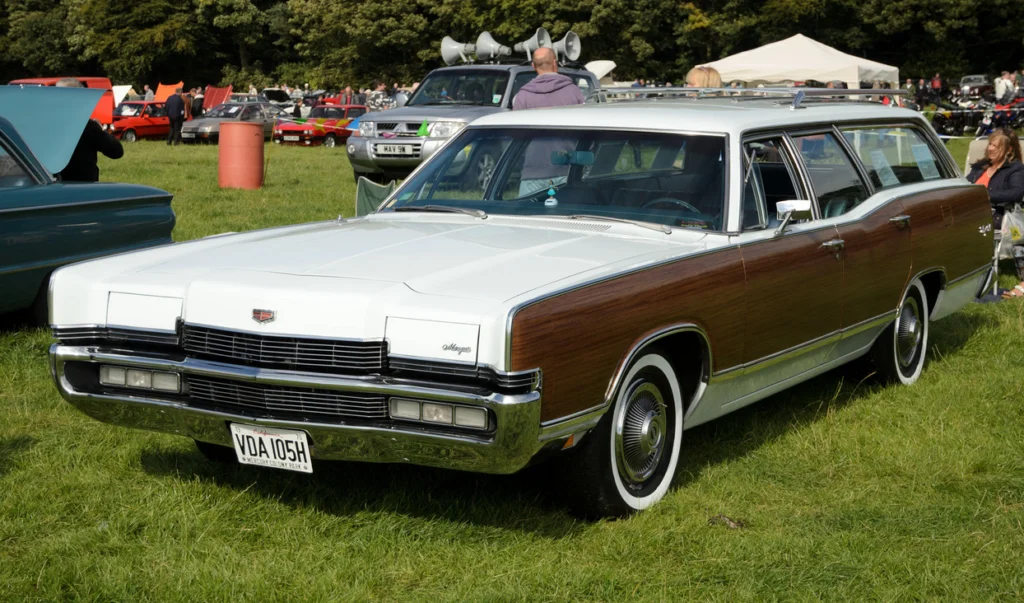
The Mercury Colony Park was the epitome of mid-century family luxury, sporting those iconic wood-grain side panels that practically defined the classic American wagon. The Colony Park’s spacious rear compartment featured side-facing jump seats that could be folded flat when not in use, creating the perfect playroom on wheels for imaginative kids. That distinctive rear-facing third row made you feel like you were in your own private clubhouse, waving at the drivers behind you. Curbside Classic considers this something of a superhero among station wagons.
The Colony Park’s impressive 18-foot length meant the way back felt like it was in another zip code from your parents up front, offering a rare taste of independence on the open road. The 1970s models featured those unmistakable dual-action tailgates that could swing open like a door or fold down flat like a picnic table, perfect for roadside lunch stops. The wagon’s smooth V8 engine created that hypnotic hum that, combined with the gentle bouncing of the rear suspension, lulled many children into peaceful naps during long stretches of highway driving.
2. The 1963-1996 Jeep Wagoneer and Grand Wagoneer
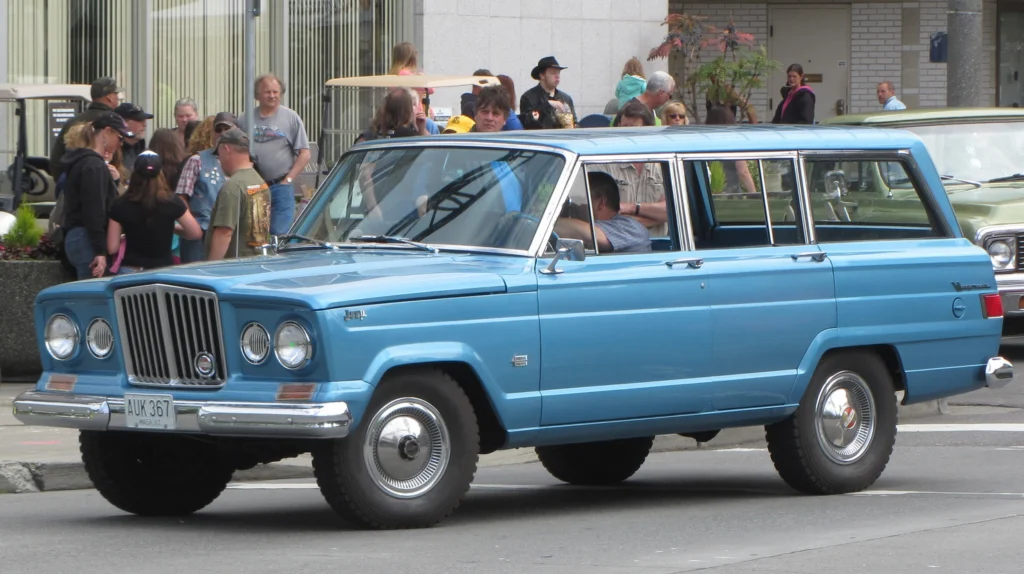
The Jeep Wagoneer revolutionized the American wagon by adding four-wheel drive capability while maintaining all the comforts families craved. The Wagoneer’s raised roof at the rear created an airy cathedral ceiling effect in the way back, making it feel more like a fort than just the back of a car. Children lucky enough to claim this territory enjoyed panoramic views through those big windows, creating the perfect backdrop for daydreaming or playing “I Spy” with passing scenery. MotorTrend puts into perspective how this model came out of the gate so well done already, it was able to march on with mostly minor changes.
The Grand Wagoneer’s legendary durability meant these vehicles became treasured family heirlooms, carrying multiple generations of children in that hallowed rear compartment. The rich wood paneling and plush interior materials gave kids the sense they were traveling in something special, almost like a cozy cabin on wheels. The rumble of the powerful engine combined with the gentle sway of the rear suspension created the perfect white noise machine for road-weary children to drift off to sleep after a day of adventure.
3. The 1950-1990 Ford Country Squire
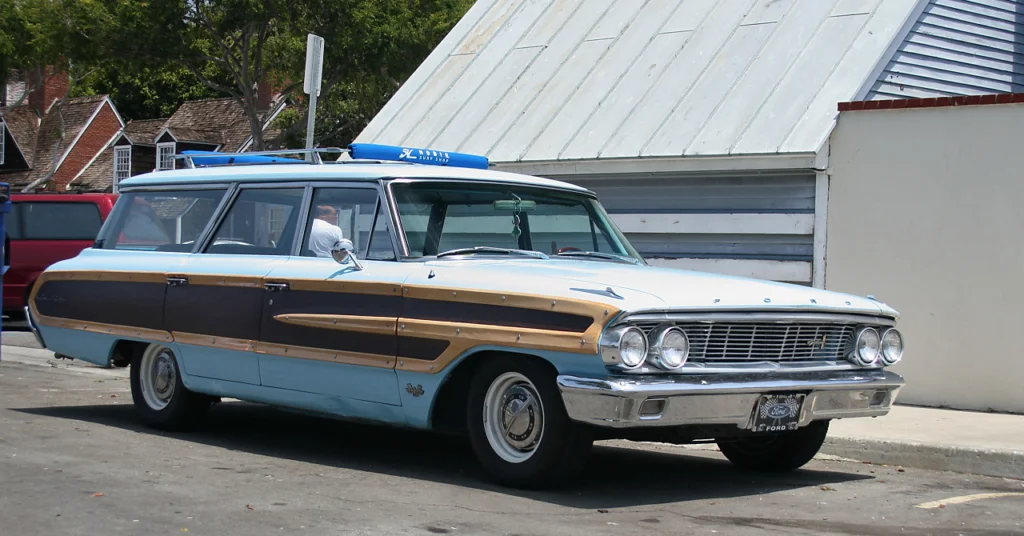
The Ford Country Squire wasn’t just a station wagon—it was practically an American institution, appearing in countless family photos and summer vacation memories. The Country Squire’s rear compartment was cavernous, offering enough space for imaginative children to spread out toys, read books, or engage in the time-honored road trip pastime of annoying siblings. The iconic “Magic Doorgate” introduced in 1966 could either swing out like a door or fold down flat, creating the perfect perch for watching fireworks or drive-in movies. Macs Motor City Garage considers this the ultimate vehicle in the Ford station wagon line.
The distinctive wood-grain paneling on the Country Squire’s sides earned it the affectionate nickname “Woody,” making kids feel like they were riding in a surfboard-topped beach wagon regardless of destination. The plush interior materials in higher-trim models meant even the way back was comfortable for long journeys, while the wagon’s smooth ride could rock even the most stubborn child to sleep. The Country Squire’s impressive production run means it holds a special place in the memories of multiple generations, with grandparents and grandchildren sometimes sharing nostalgic stories about their own adventures in the way back.
4. The 1955-1988 Chevrolet Nomad and Bel Air Wagon
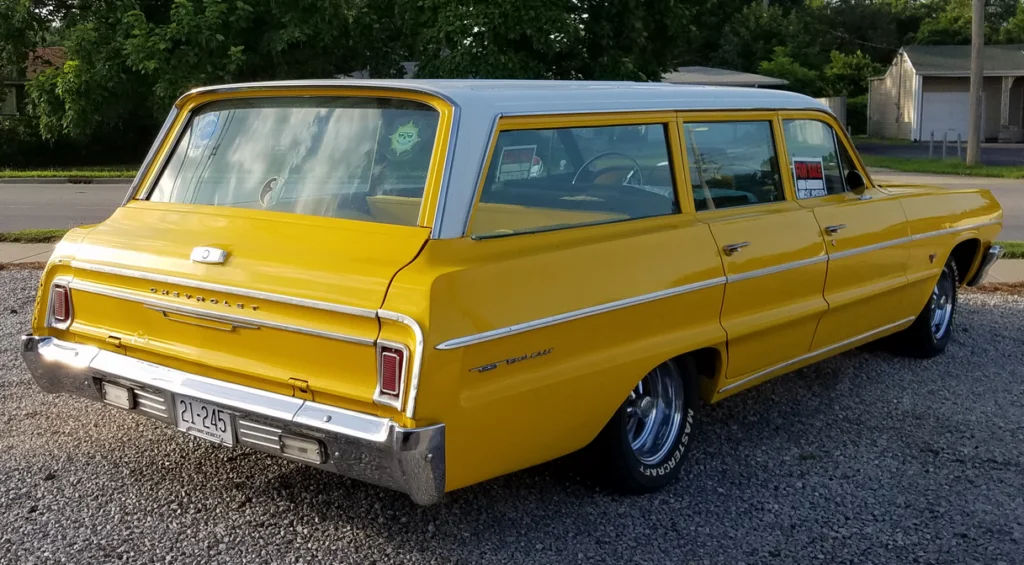
The Chevrolet Nomad started life as a stunning concept car before becoming one of the most stylish wagons ever to grace American roads. The sleek Nomad featured distinctive design elements like its forward-slanting B-pillars and wraparound rear glass, making the way back feel like a sophisticated observation deck. Children riding in the rear compartment of these beauties enjoyed an unmatched sense of specialness, knowing they were traveling in what many consider the most beautiful wagon ever produced.
The later Bel Air wagons maintained the Nomad’s spirit while offering more practical family features, including a massive cargo area that could accommodate everything from camping gear to a small fleet of bicycles. The rear compartment in these Chevrolet wagons featured high-quality materials like vinyl and carpet that could withstand the abuse of countless road trips and spilled drinks. The Nomad and Bel Air wagons’ powerful V8 engines provided just enough rumble through the floor to serve as a soothing vibration for children sprawled out in the back with their coloring books and travel games.
5. The 1977-1990 Oldsmobile Custom Cruiser
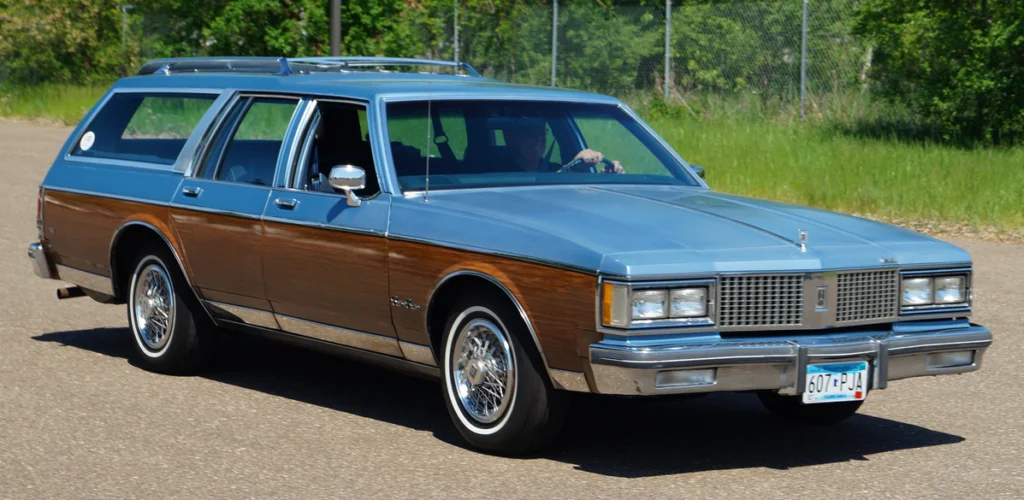
The Oldsmobile Custom Cruiser was the pinnacle of full-sized wagon excess, stretching nearly 19 feet long with room for up to nine passengers when fully loaded. The Custom Cruiser’s rear-facing third row was spacious enough that even adults could sit there comfortably, though children guarded this territory jealously as their rightful domain. The wagon’s massive rear window offered an unparalleled view of the receding landscape, creating the perfect backdrop for imaginary adventures or simply watching the world go by in reverse.
The Custom Cruiser’s legendary smooth ride came courtesy of its body-on-frame construction and sophisticated suspension system, creating the sensation of floating on a cloud. The 1977 redesign introduced the iconic “clamshell” tailgate that disappeared into the floor, creating a perfectly flat loading surface that doubled as the stage for impromptu performances at rest stops or campsites. The cushy interior materials and ample sound insulation created a cocoon-like environment in the way back, allowing children to create their own world separate from parental oversight up front.
6. The 1960-1976 Rambler/AMC Cross Country Wagon
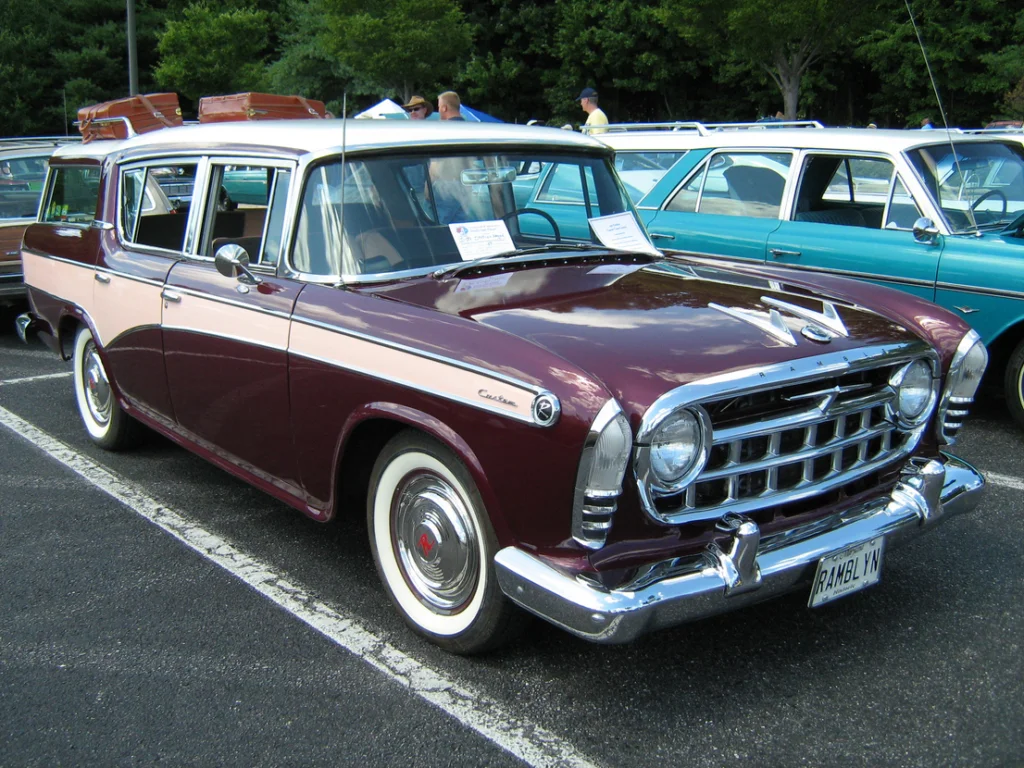
The Rambler Cross Country (later sold under the AMC badge) offered American families a slightly smaller but infinitely practical alternative to the land yachts from the Big Three automakers. The Cross Country’s third row featured a clever design that could be configured multiple ways, including the coveted rear-facing position that gave children their own private domain with a view. The wagon’s relatively compact dimensions meant that conversations could still flow between front and back, creating a more inclusive family travel experience while still giving kids their cherished independence.
AMC’s famous attention to practical details meant the way back included thoughtful touches like reading lights, cup holders, and storage compartments long before such amenities became standard. The Cross Country’s efficient inline-six engine delivered a distinctive purring sound that served as the soundtrack for countless family adventures across America. The wagon’s reputation for reliability meant many families kept their Cross Country wagons for a decade or more, allowing children to grow up with fond memories of “their” special place in the family car.
7. The 1960-1984 Volvo 122/140/240 Wagons
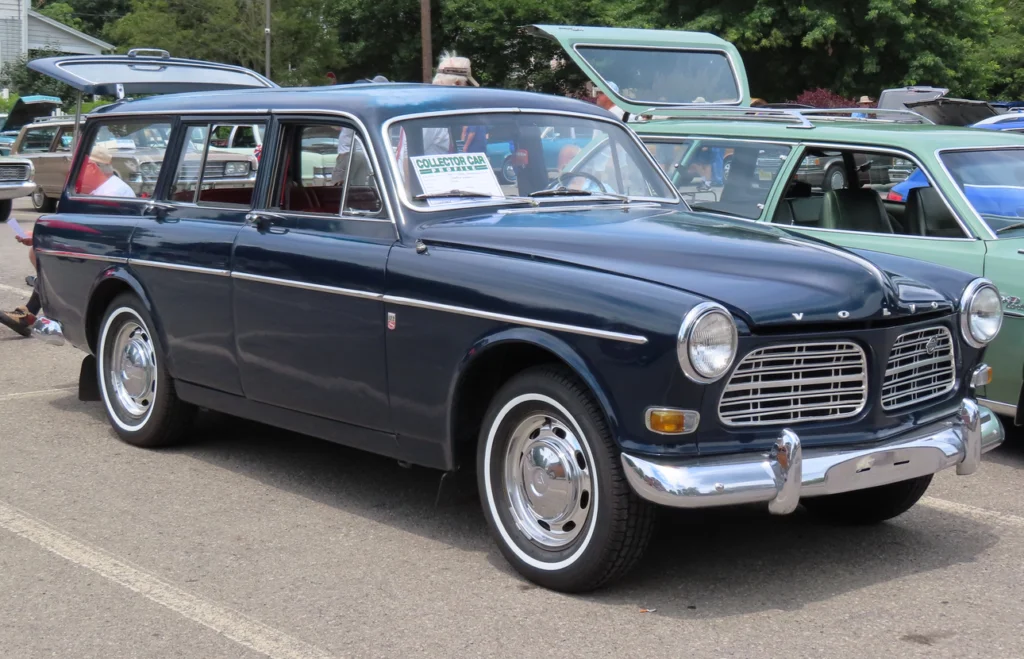
The Volvo wagons brought European practicality and safety consciousness to the American station wagon scene, quickly becoming favorites among college professors and suburban intellectuals. The Volvo’s rear compartment was a study in Scandinavian minimalism, with clean lines, durable materials, and thoughtful touches that made the way back both comfortable and functional. The rear-facing jump seats in many models folded ingeniously into the floor when not needed, creating a truly versatile space that could adapt to whatever adventure your family had planned.
The boxy design of these Swedish workhorses meant the way back enjoyed exceptional headroom, allowing even taller children to sit comfortably without hunching. The Volvo’s legendary durability meant these wagons often became hand-me-downs to the very children who once rode in the way back, creating a powerful sense of continuity and family tradition. The distinctive purr of the Volvo engine provided a reassuring acoustic backdrop for reading books, playing travel games, or simply watching the world roll by from that special perch at the very back of the family wagon.
8. The 1966-1977 Volkswagen Type 3 Squareback
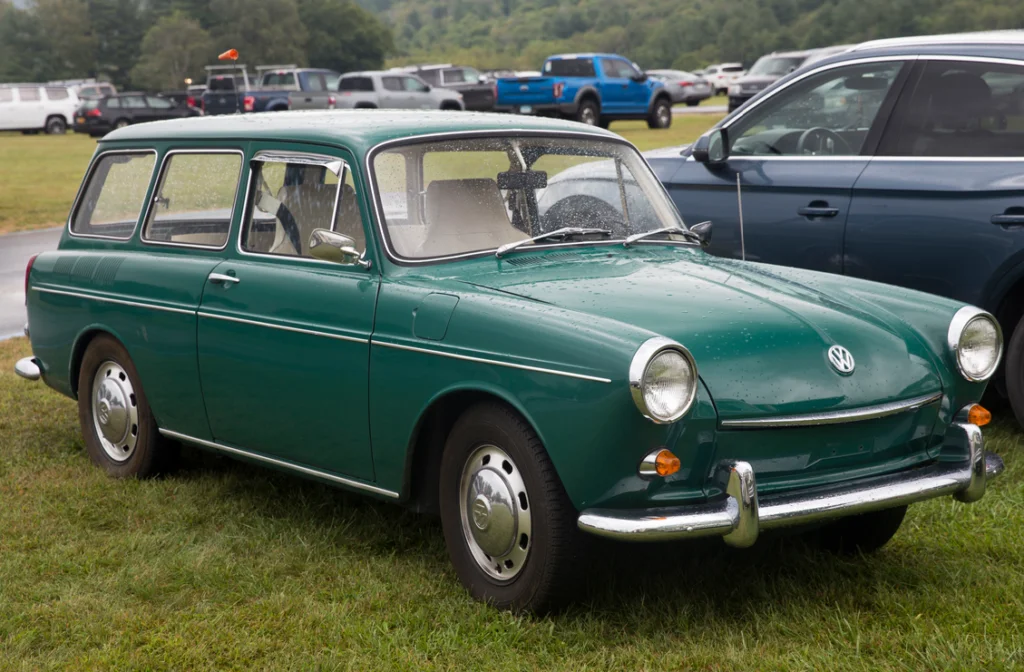
The VW Squareback brought German engineering and distinctive styling to the station wagon market, offering an alternative for families looking for something different from the typical American behemoths. Despite its compact exterior dimensions, the Squareback featured a surprisingly spacious rear cargo area where children could spread out among the luggage, creating cozy nests for long journeys. The wagon’s rear engine layout meant the way back had a slightly elevated floor with an intriguing hump in the middle, creating natural boundaries for siblings who needed their own territory.
The Squareback’s distinctive air-cooled engine produced a unique soundtrack that became inseparable from the memories of trips taken in these quirky wagons. The large rear window and airy greenhouse design meant the way back was flooded with natural light, perfect for reading comic books or watching the landscape roll by. The Squareback’s cult following meant that children who grew up riding in the way back often sought out these distinctive wagons when they became adults, hoping to recreate those special memories for their own families.
9. The 1970-1992 Buick Estate Wagon
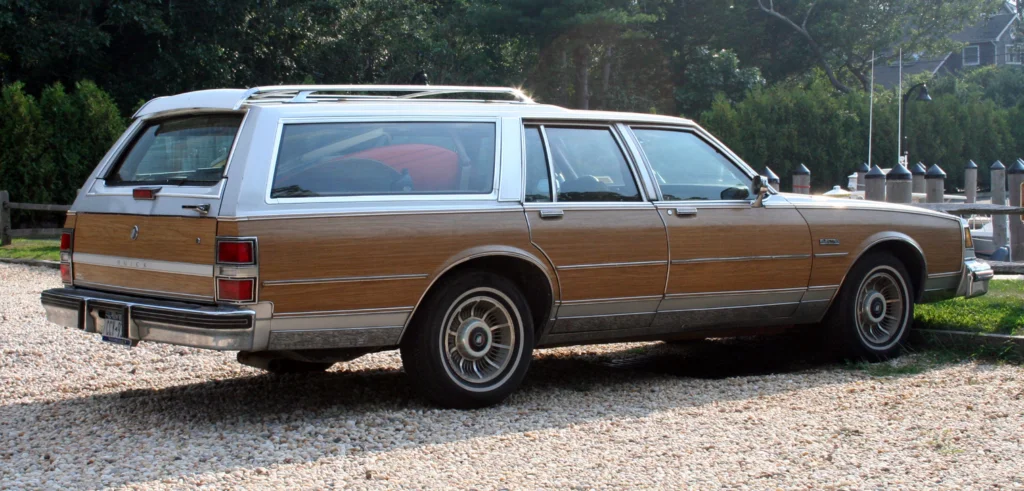
The Buick Estate Wagon embodied American luxury on wheels with its sophisticated styling, plush interior, and smooth-as-silk ride quality. The Estate’s expansive rear compartment featured thick carpeting and high-quality materials that made the way back feel more like a luxurious lounge than just the rear of a car. Children fortunate enough to claim this territory enjoyed the wagon’s whisper-quiet interior, where the only sounds were the gentle thrum of the massive V8 engine and the occasional crinkle of unwrapped road trip snacks.
The Estate Wagon’s enormous dimensions—stretching over 19 feet in some model years—meant the way back felt like it was in another time zone from the front seat, offering kids a rare taste of autonomy on family journeys. The distinctive clamshell tailgate could be operated by power controls in later models, adding to the sense that this was a truly special vehicle with magical powers. The Estate’s famously plush suspension system absorbed every bump and dip in the road, transforming even the roughest highways into smooth sailing and often lulling way-back passengers into peaceful naps before they’d even crossed state lines.
10. The 1967-1988 International Harvester Travelall
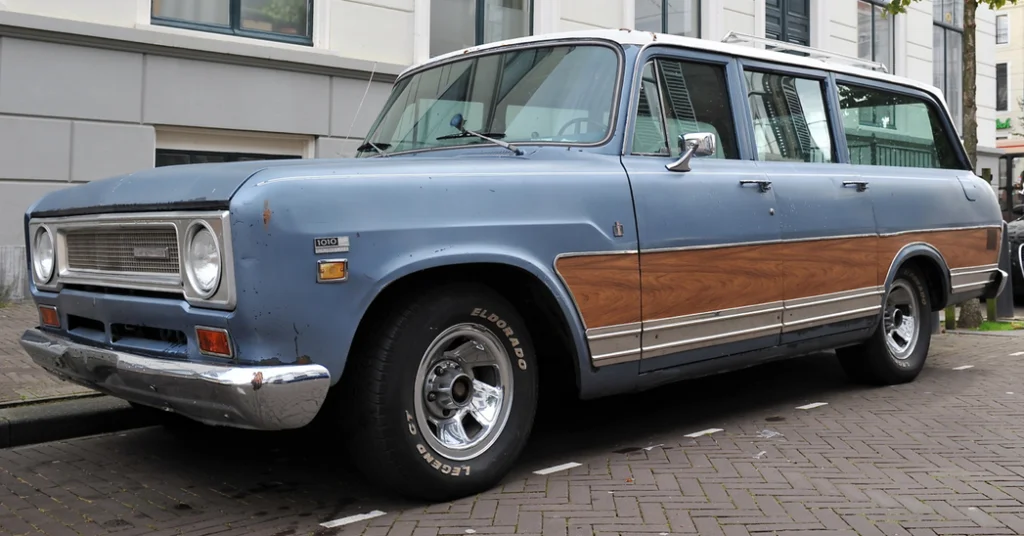
The International Harvester Travelall brought rugged farmhouse charm to the station wagon concept, appealing to families who wanted something more robust than the typical suburban cruiser. Though technically an early SUV, the Travelall functioned as a wagon for many families, with its massive cargo area becoming the treasured domain of children who appreciated its utilitarian character and go-anywhere capability. The rear compartment featured practical, easy-to-clean surfaces that could handle everything from melted ice cream to muddy boots without parents having to fuss about the mess.
The Travelall’s truck-based construction meant the way back had a distinctive bounce that differed from traditional station wagons, creating a gentle rodeo-like experience that children found thrilling on bumpy roads. The massive rear windows provided an exceptional panoramic view, perfect for spotting wildlife on camping trips or playing “I Spy” during long stretches of highway driving. The Travelall’s unique position as neither a traditional wagon nor a modern SUV gave it a special place in the hearts of children who rode in that distinctive rear compartment, where the smell of adventure (and occasionally livestock) permeated the practical vinyl upholstery.
11. The 1968-1984 Toyota Crown Wagon
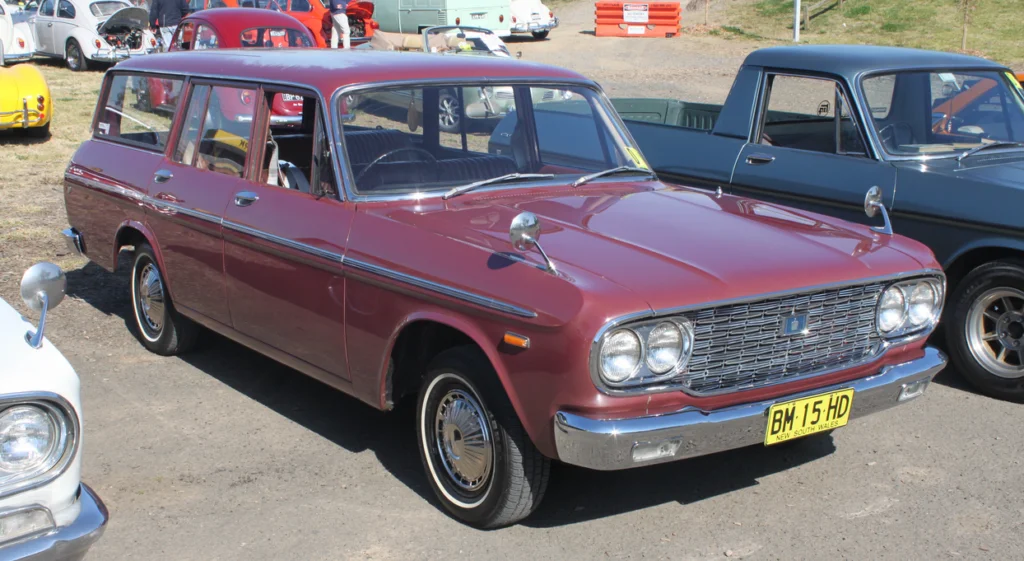
The Toyota Crown Wagon introduced many American families to Japanese reliability while maintaining the nostalgic station wagon experience they cherished. The Crown’s way back featured ingeniously designed rear-facing seats that could fold completely flat when not in use, creating a versatile space that could adapt to any family’s needs. Children riding in these seats enjoyed the novelty of a foreign car combined with the traditional joy of watching the world recede from that special rear-facing vantage point.
The Crown Wagon’s precise engineering resulted in doors that closed with a satisfying thunk and windows that rolled up and down with remarkable smoothness, details that impressed even the youngest passengers. The wagon’s efficient six-cylinder engine produced a distinctive purr that served as a soothing backdrop for reading, napping, or engaging in whispered conversations away from parental ears. The Crown’s reputation for reliability meant these wagons often became trusted family members, accompanying children from their earliest memories through their teenage years, with the way back serving as the stage for countless formative experiences.
12. The 1952-1971 Citroën DS Safari/Break

The Citroën DS Safari (called the “Break” in some markets) brought French avant-garde design and unparalleled comfort to the station wagon segment. The DS’s famous hydropneumatic suspension created a floating sensation that made riding in the way back feel like gliding on a magic carpet rather than traveling on conventional roads. Children in the rear compartment were treated to the wagon’s unique panoramic roof that extended all the way back, creating an observatory-like experience where they could watch clouds drift by or stars emerge as day turned to night.
The Safari’s distinctive elongated body, with its aerodynamic curves and futuristic details, made children feel like they were riding in a spaceship rather than a mere automobile. The rear jump seats folded ingeniously into the floor when not needed, demonstrating French innovation that fascinated mechanically-minded children who loved to operate the clever system. The DS’s almost silent operation and supernatural ability to smooth out even the roughest roads meant that children in the way back experienced a tranquility unmatched by any other wagon of the era, often arriving at destinations refreshed and ready for adventure rather than weary from travel.
Gone are the days when safety consisted of mom’s outstretched arm during a sudden stop or dad’s stern warning to “settle down back there!” Today’s children may have more entertainment options and safety features in their family vehicles, but they’ll never know the special freedom of riding in the way back of a classic station wagon. Those magical rear compartments were more than just seating areas—they were the backdrop for childhood imagination, the setting for family togetherness, and for many of us, the origin of our most treasured travel memories.


